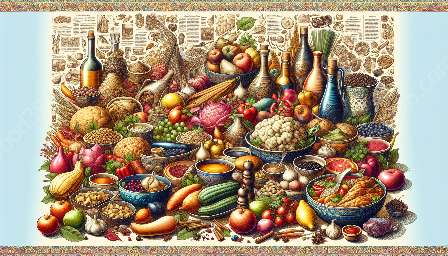Soil quality plays a crucial role in the cultivation of specific crops and the development of agricultural practices across various geographic areas. Understanding the impact of soil on crop cultivation is essential to grasp the influence of geography on food culture and the origin and evolution of food culture.
Soil Quality and Crop Cultivation
The quality of soil directly affects the growth and yield of specific crops. Different varieties of crops require specific soil conditions, such as pH levels, organic matter content, and nutrient availability, to thrive and produce high-quality yields. For instance, acidic soils are suitable for crops like blueberries and cranberries, while alkaline soils are favorable for crops like asparagus and cauliflower.
Furthermore, the texture of soil, whether it is sandy, loamy, or clay, impacts water retention and drainage, which are vital factors in crop growth. Soil with good water-holding capacity is essential for crops like rice and cranberries, whereas well-drained soil is crucial for crops such as tomatoes and peppers.
Agricultural Practices and Soil Quality
Agricultural practices are significantly influenced by soil quality. Farmers adopt different techniques and methods based on the soil characteristics present in their geographic areas. For example, in regions with high clay content, farmers may use techniques like subsoiling to break up compacted soil layers, improving water infiltration and root growth. Conversely, in sandy soils, farmers may implement irrigation methods to ensure proper moisture levels and nutrient supply to crops.
Moreover, the management of soil fertility and the use of organic amendments, such as compost and manure, are crucial agricultural practices that are tailored to the specific needs of the soil. Understanding the unique soil composition of different geographic areas is essential for the successful implementation of sustainable and productive agricultural practices.
Influence of Geography on Food Culture
Geography plays a pivotal role in shaping food culture. The availability of specific crops and agricultural practices in different geographic areas directly influences the dietary habits and culinary traditions of the local population. For example, regions with rich alluvial soils may have a tradition of rice cultivation, leading to the incorporation of rice as a staple food in the local cuisine.
Furthermore, the climate and topography of a region often determine the types of crops that can be cultivated. Coastal regions may have a tradition of seafood-based dishes, while mountainous regions may celebrate hearty, root vegetable-based cuisines. The diversity of soil quality in various geographic areas contributes to the rich tapestry of global food cultures.
Origin and Evolution of Food Culture
The origin and evolution of food culture are closely linked to the cultivation of specific crops and the development of agricultural practices. Over time, the interaction between soil quality, climate, and human ingenuity has led to the diversification of food cultures around the world. As societies adapted to the agricultural opportunities presented by their geographic areas, they developed unique culinary traditions and food preservation techniques.
Exploration, trade, and migration also played a significant role in the exchange of crops and agricultural knowledge between different geographic regions, leading to the enrichment and evolution of food cultures. For example, the introduction of spices from distant lands influenced the development of flavors and cooking techniques in various food cultures.
In conclusion, soil quality is a fundamental factor in the cultivation of specific crops and the development of agricultural practices in diverse geographic areas. Understanding the intricate relationship between soil, crops, geography, and food culture is essential for appreciating the rich tapestry of global culinary traditions and the fascinating evolution of food culture throughout history.


